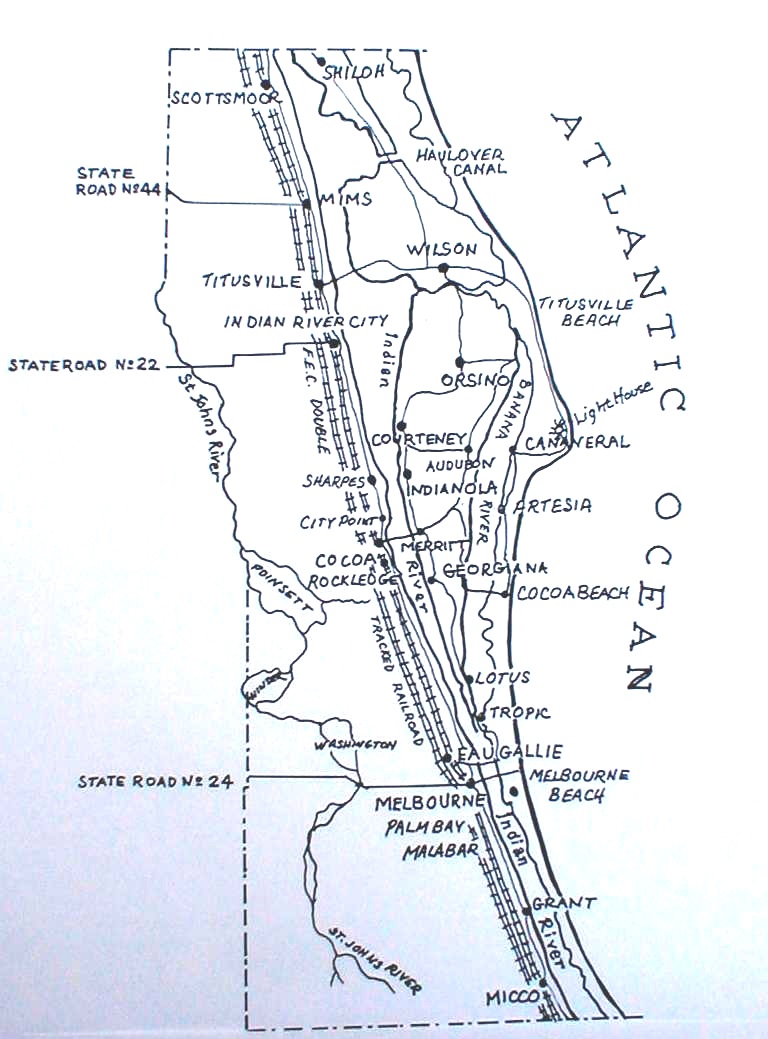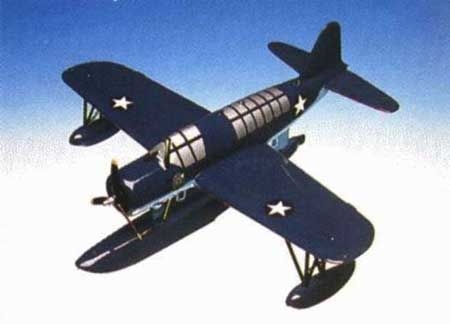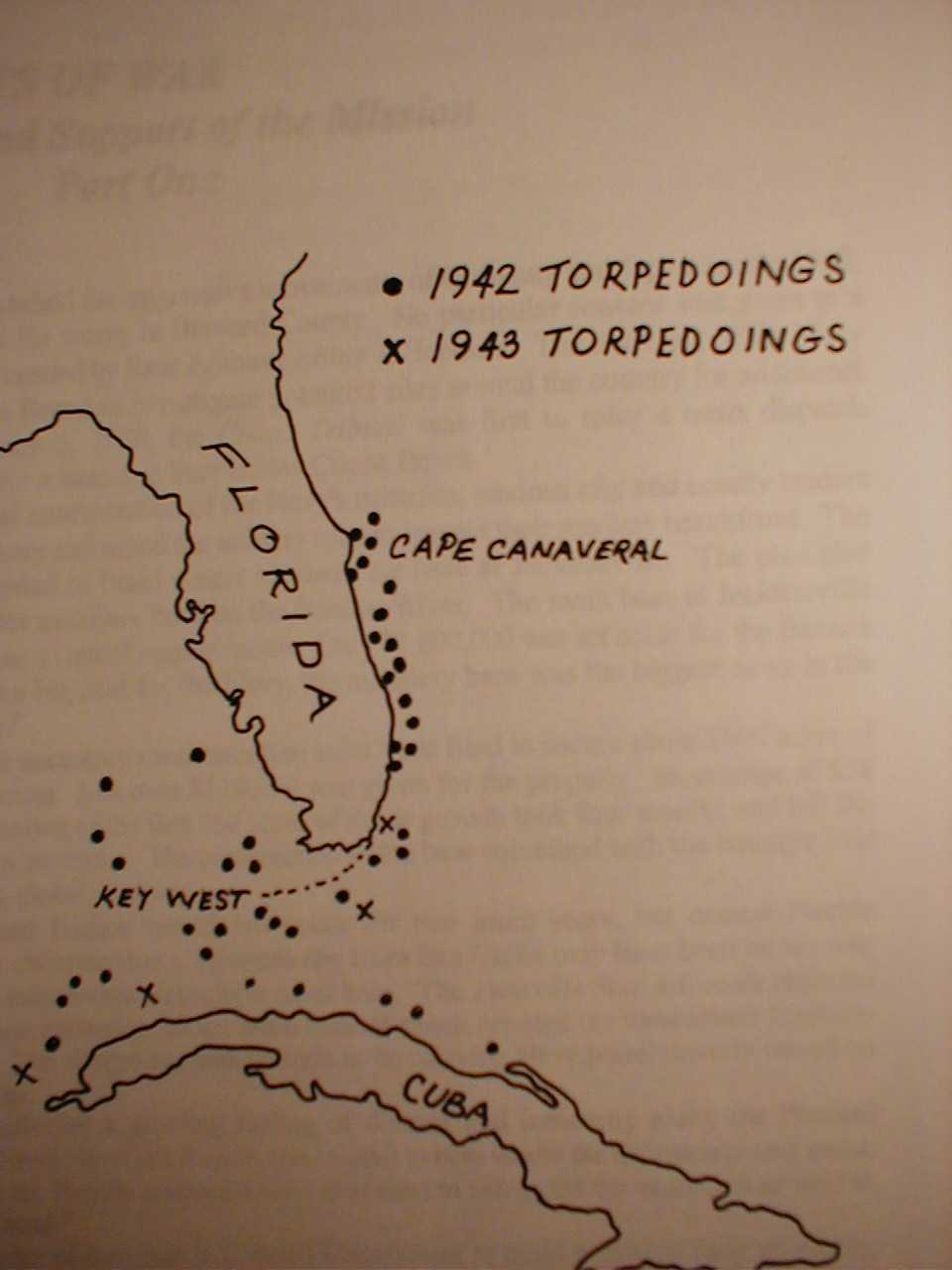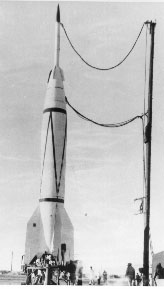

I n t h e f a l l o f 1 9 3 9,
Brevard County’s 16,000 residents felt excited and fortunate to hear that the Navy had plans for a naval air station somewhere on the Banana River.At that time, Brevard was a very rustic spot. The county’s only claim to fame was its celebrated Indian River citrus and the newly paved Dixie Highway.
Local crackers were caught off guard when the Navy quickly started construction and demanded new roads to its fledgling naval base.
The first job was to clear and pave a path through the saw palmettos from Eau Gallie to Cocoa Beach, today’s A1A. The new construction projects were a great boost to the county’s economy and many young men seeking steady employment, such as 28-year-old Joe Wickham, a future county commissioner, were anxious to have the jobs.
The rickety bridge west of today’s Minuteman Causeway was good enough for the 48 residents of Cocoa Beach, but too narrow for military trucks. Consequently, the first of the county’s steel and concrete bridges was started at Cocoa during 1940.
The half-built Naval Air Station-Banana River was commissioned on October 1, 1940. The following year, the new base continued to build structures, such as hangers, sea ramps, and a water treatment plant.
The new military base was organized as two squadrons. One was tasked with scout observation. The other was a Transitional Training Squadron to instruct pilots to fly the latest military aircraft. A lesser-known outfit began operation in Hanger 800 along the base’s eastern edge. (unfortunately torn down during the late 1990s). This was Project Baker, a high-tech training program for pilots to learn instrument or “blind” landings.
After the December attack on Pearl Harbor, the U.S. became involved in the war and assigned many young aviators to the base. One of those men was George W. Maxwell. Mr. Maxwell’s son became Judge George W. Maxwell III, now retired.
 Lt. JG Maxwell, flew the Vought 02SU Kingfisher, a beautiful two-seat, single prop seaplane with a 450 HP . The second seat held the radioman/gunner. Maxwell flew many missions as a member of squadron VS-1-D7, usually flying 100 miles out, and occasionally refueling in the Bahamas.
Lt. JG Maxwell, flew the Vought 02SU Kingfisher, a beautiful two-seat, single prop seaplane with a 450 HP . The second seat held the radioman/gunner. Maxwell flew many missions as a member of squadron VS-1-D7, usually flying 100 miles out, and occasionally refueling in the Bahamas.
Lt. Maxwell had a lot to worry about. During the war, German U-boats known as wolf packs to rpedoed 25 ships between Key West and Daytona, some just offshore from the base. As a countermeasure, the Navy had in place auxiliary and satellite stations at intervals all along the east coast: at Tico, NAS-Melbourne, Malabar, Valkaria, Vero, and on down to Key West, Great Exuma, Jamaica, and Guantanamo Bay. Certainly many more commercial and military ships would have been destroyed without the reconnaissance and protection of Brevard’s base and men like Maxwell.
rpedoed 25 ships between Key West and Daytona, some just offshore from the base. As a countermeasure, the Navy had in place auxiliary and satellite stations at intervals all along the east coast: at Tico, NAS-Melbourne, Malabar, Valkaria, Vero, and on down to Key West, Great Exuma, Jamaica, and Guantanamo Bay. Certainly many more commercial and military ships would have been destroyed without the reconnaissance and protection of Brevard’s base and men like Maxwell.
Brevard’s two military bases at Banana River and Melbourne faded away after the war. But the county was left with many improvements–most important were the concrete bridges, paved roads, airports, and a mosquito control program.

When future base executive officer, GS-14 Al Parry, drove by the base in 1948, weeds covered the runways. All was quiet along the beach that summer. The county’s first radio station, WMMB, went on the air to play big band sounds and the Surf Restaurant opened in Cocoa Beach.
Then in 1949, predecessors of Patrick’s AFTAC detected a Russian nuclear explosion on August 29th. Suddenly the old air station became a critical military asset. The newly created Joint Long Range Proving Ground stepped up its pace, establishing the old naval base as headquarters for a launch site at the Cape, and tracking stations as far as Puerto Rico. During that summer, local papers were referring to the base as the Banana River Air Force Base.
Fittingly, the base was renamed Patrick AFB on Aug 1st, 1950 for the first commander of the Army Air Service, Maj. Gen. Mason Patrick. Patrick fought for an air training academy as early as 1918. Melbourne leaders offered ground adjacent to NAS-Melbourne as the site of the new U.S. Air Force Academy in January 1954. But the only aviators seen were the abundant mosquitoes they were slapping that summer when Colorado Springs was awarded the bid.
Of all the benefits brought to Brevard by the military, the most enduring was the electronic technology. The technology of Project Baker continued in 1946 at the Melbourne naval base where the Electronic Warfare Platoon trained.
At this same site in 1950, a small company named Radiation (purchased by Harris Corp. in 1967) was organized and quickly expanded. Also in 1950, technicians launched the first missile from Cape Canaveral, Bumper 8. Standing 56 feet tall, the imported rocket was a modified version of one of Hitler’s V-2s. To demonstrate staging in flight, the original warhead nose of the German rocket was replaced with a second-stage device, the U.S. Army’s WAC Corporal missile. (Learn more of the Cape’s early beginnings at my KSC blog.)
Early after the war, General Henry Arnold put a plan in place for the military to work hand-in-hand with private enterprise. During the next sixty years the companies started by the young biplane designers Don Douglas, Glenn Martin, Allan Lockheed, James McDonnell, and Leroy Grumman would come to build the future of space exploration, and Brevard County, Florida.
Source:
Eriksen, John M. Brevard County, Florida : A Short History to 1955
read it now for on your PC, Kindle, Tablet, or smartphone.